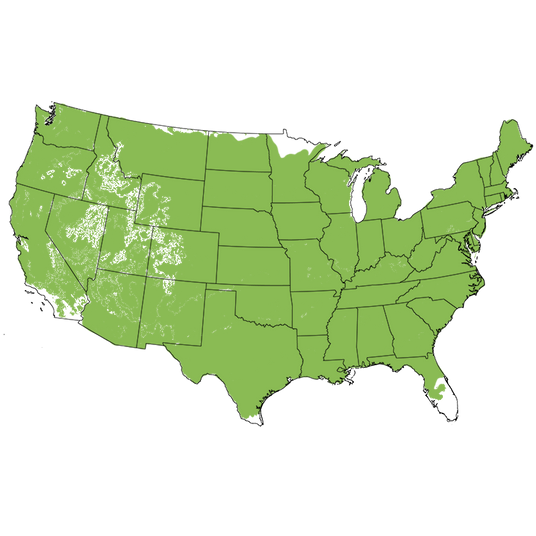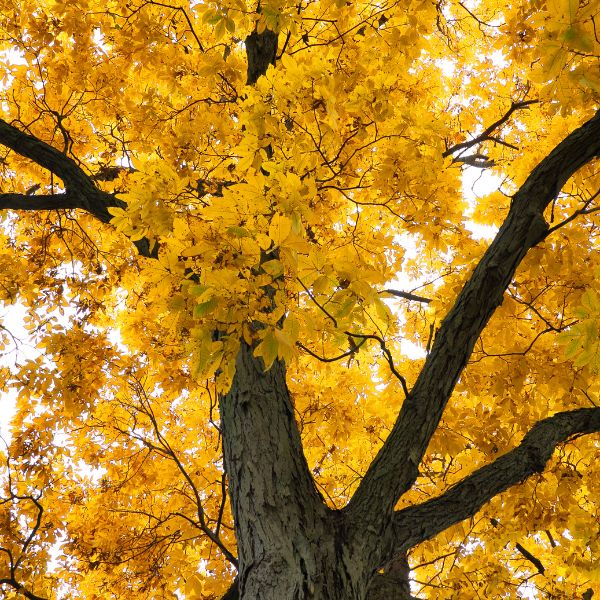Mockernut Hickory Tree
Carya tomentosa
- Stay Protected with Plant Sentry ™
Mockernut Hickory Tree - #3 Container is backordered and will ship as soon as it is back in stock.
Plant Sentry™
Plant Sentry™

Plant Sentry™ Protected
Your order is protected by our compliance system that:
- Prevents restricted plants from shipping to your state
- Ensures plants meet your state's agricultural requirements
- Protects gardens from invasive pests and diseases
Delivery and Shipping
Delivery and Shipping
Delivery and Shipping
Fast, Safe Plant Delivery
Ships in 3-4 business days • Tracking provided • Weather protected
| Under $50 | $9.99 |
| $50 - $99.99 | $14.99 |
| $100 - $149.99 | $16.99 |
| $150 - $198.99 | $24.99 |
| $199+ | FREE |
✓ Zone-specific timing • ✓ Professional packaging • ✓ Health guarantee
Understanding Plant Options
Nature Hills offers plants in two main formats:
- Container Plants: Grown in pots with soil, sized by container volume and plant age
- Bare Root Plants: Dormant plants without soil, sized by height measurements
Container Plant Sizes
Container sizes indicate plant age and growing capacity rather than liquid volume equivalents. Our containers follow industry-standard nursery "trade gallon" specifications, which differ from standard liquid gallon measurements.
Young Plants (6 months to 18 months old)
| Container Size | Actual Volume | Metric Equivalent |
|---|---|---|
| 2" x 2" x 3" | 0.18 - 0.21 dry quarts | 0.20 - 0.23 dry liters |
| 4" Container | 0.31 - 0.87 dry quarts | 0.35 - 0.96 dry liters |
| 4.5" Container | 0.65 dry quarts | 0.72 dry liters |
| 6" Container | 1.4 dry quarts | 1.59 dry liters |
| 1 Quart | 1 dry quart | 1.1 dry liters |
| 5.5" Container | 1.89 dry quarts | 2.08 dry liters |
Established Plants (18 months to 2.5 years old)
| Container Size | Actual Volume | Metric Equivalent |
|---|---|---|
| 2 Quart | 2 dry quarts | 2.2 dry liters |
| #1 Container | 2.26 - 3.73 dry quarts | 2.49 - 4.11 dry liters |
| 5" x 5" x 12" | 3.5 - 4.3 dry quarts | 3.85 - 4.74 dry liters |
Mature Plants (2-4 years old)
| Container Size | Actual Volume | Metric Equivalent |
|---|---|---|
| #2 Container | 1.19 - 1.76 dry gallons | 5.24 - 7.75 dry liters |
| #3 Container | 2.15 - 2.76 dry gallons | 8.14 - 12.16 dry liters |
Large Plants (3-5 years old)
| Container Size | Actual Volume | Metric Equivalent |
|---|---|---|
| #5 Container | 2.92 - 4.62 dry gallons | 12.86 - 20.35 dry liters |
| #6 Container | 5.25 - 6.01 dry gallons | 23.12 - 26.42 dry liters |
| #7 Container | 5.98 - 6.53 dry gallons | 26.34 - 28.76 dry liters |
Bare Root Plants
Bare root plants are sold by height from the root system to the top of the plant. Plants may exceed minimum height requirements.
Common Sizes:
- Trees: 1 foot, 2 feet, 3 feet, 4 feet, 5 feet, 6 feet
- Shrubs & Perennials: 1 foot, 18 inches, 2 feet
Important Notes
Container Volume Specifications
- Trade Gallon Standard: Our containers follow industry-standard "trade gallon" specifications established by the American National Standards Institute (ANSI Z60.1) for nursery stock
- Volume Variations: Actual soil volume may vary due to plant root systems and growing medium settlement
- Age Indicators: Container size primarily indicates plant age and maturity rather than liquid volume equivalents
Growing Conditions
- Plant size can vary based on variety and growing conditions
- Container size helps indicate plant maturity and establishment level
- Larger containers generally mean more established root systems and faster landscape establishment
Seasonal Availability
- Bare root plants are available seasonally when dormant
- Container plants are available throughout the growing season
- Specific varieties may have limited availability in certain sizes
Questions?
For questions about specific plant sizes or availability, please contact our plant experts who can help you choose the right size for your landscape needs.
Plant Highlights
Mockernut Hickory Tree highlights at a glance!
-
Plant Class
-
Botanical Name
-
Brand
-
Growing Zones4, 5, 6, 7, 8, 9
-
Growth RateModerate
-
Mature Height
-
Mature Width
-
Leaf Color
-
Flower Color
-
Pollinator FriendlyYes
-
Pollinator Required
-
Bloom PeriodEarly Spring, Late Spring
Characteristics
Where To Plant
When To Prune
- Late Winter
Water & Moisture Needs
- Moderate
Sunlight Needs
Soil Needs
- Well Drained

Growing Zones
Plant a hardy native shade and nut tree for you and your wildlife! The Mockernut Hickory Tree (Carya tomentosa) is a tough, strong tree with male and female separate flowers (monoecious) on the same tree. The greenish flowers that appear from April to May are long catkins on male trees or spiky on female trees.
The rounded crown and stout, ascending branches. The green leaves are alternate and feathery compound foliage with 5 - 9 leaflets. The two-tone leaves can be yellowish-green and shiny while the lower surface is often paler with light orange or brown hairs. Plus the crushed leaves smell spicy, like orange rind! The long male catkins and spikey female flower clusters appear in spring at the terminal ends of the branches.
Mockernut Hickory is hardy throughout USDA growing zones 4 to 9 and can grow at a moderate to slow speed to a grand height of 60-80 feet with a spread of 40-60 feet in width. These trees are wind-pollinated and you'll get the best harvest when planting multiple trees in groves. The nuts ripen between September to October and have a dark reddish brown shell. The long-pointed kernels of these nut trees are sweet and edible.
Planting and Application:
Mockernut Hickory are fantastic shade trees and are long-lived lawn trees so long as you give them a wide berth of mulch beneath their boughs to make collecting the nuts easier and walking under your tree barefoot a bit safer. Park a hammock beneath your tree and enjoy the cooling shade all summer!
Situate native shade trees on the side of your home to block the summer sun and reduce cooling costs. Once the deciduous foliage drops in the autumn, the warming sun will stream through the bare gray branches to help warm things up in the winter! Songbirds and wildlife will love your tree as much as you will!
Plant as part of a mixed windbreak border or a solitary specimen in the landscape! Groupings and groves in backyards and out-of-the-way areas to create a wildlife sanctuary or edible gardening food forest! Use the sweet nutmeats in baked goods, trail mix, or toasted and sprinkled over your oatmeal because they taste like a mix of maple, tropical fruit, and other Hickory nuts like Shagbark or Shellbark Hickory.
- Greenish Spring Flowers Become Sweet Delectable Edible Nuts
- Yellowish-Green Compound Leaves With Hairy Undersides
- Tall Ascending Strong Branches
- Hardy Native Deciduous Tree
- Shade, Specimens, Edible Landscaping & Wildlife
#ProPlantTips for Care:
Hickory Trees prefer well-drained soils and need full sun with at least six hours of direct sunlight a day. Create a raised mound for planting, if you have soggy soil. Bring in additional soil at least 18 inches high by three feet wide, and plant in that mound. Give trees a consistent amount of moderate water to keep your tree stress-free, improving their health and resistance to pests and disease. Provide a 3-4 inch thick layer of mulch over the soil surface out to the 'drip-line' of your tree. Prune in late winter. Don't grind any pruned limbs, cut them for excellent firewood. Use a few chips while smoking meat for that outstanding Hickory flavor!
Trees usually do not begin bearing nuts until 15 to 20 years old. Once of bearing age, crops of Hickory nuts can be expected every year!
- Full Sun
- Well-Drained Soil
- Prefers Moderate Regular Moisture
- Prune When Dormant
- Seldom Bothered By Deer
Plant some grandeur! The Mockernut Hickory Trees are just the edible landscaping you need for shade and native hardiness! Order yours today at Nature Hills!










